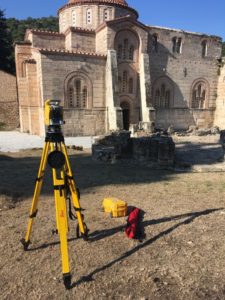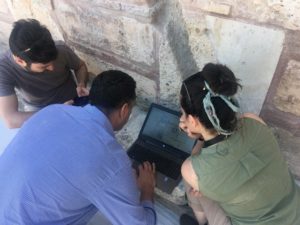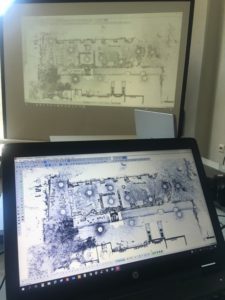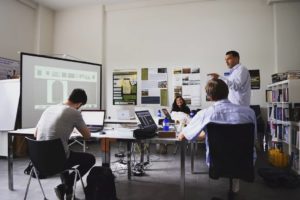In Uncategorized




"Importance of digital tools for heritage documentation and management" by Dr. Cornelis Stal

On Friday the 19th of July 2019, Athens was shocked by an earthquake with a magnitude of 5.1 on Richter’s scale. Fortunately, this did not result in mortal injuries, but several buildings were severely damaged. Among others, the northern wall of the UNESCO world heritage site of the Daphni suffered a lot from this event. A good month earlier, HERITΛGE has organized a specialist course on the 3D documentation of cultural heritage. Coincidently, the same monastery has been selected as a case study for the participants to learn about the use of photogrammetry and laser scanning for the virtual reconstruction of site. After the earthquake, the resulting data are directly sent to the responsible authorities, allowing them to incorporate the models in the reconstruction and restoration activities.
This example clearly illustrates the importance of up-to-date and easily accessible data for heritage management. Endangered heritage can suffer from many events, like earthquakes in our example, but also flooding, forest fires, plunder, etc. Also, on a long term, heritage is heavily affected by lack of tools, financial means or improper use of the relics. In all cases, the features of the heritage asset can be permanently destroyed and with it its high cultural value and the collective memory that it represents. 3D data allows managers to get a better understanding of their heritage and gives conservators and architects an indispensable source for their reconstruction work.


All the more reason that HERITΛGE puts a strong focus on these topics by organizing specialist courses and summer schools, dealing with various aspects of spatial data acquisition and data management. These programs are not limited to the production of highly accurate 3D models, but a strong emphasizes is also put on the publication of data in terms of individual deliverables (point clouds, orthophotos, digital elevation models, textured 3D models, …). Furthermore, the impact of these deliverables is optimized by implementing open-source and online platforms for the visualization and analysis. Easy accessibility of virtual reconstructions of sites, presented on interactive and online platforms, increases the public awareness of the importance of cultural heritage and improves communication between all stakeholders. Geographic information systems and web mapping are also having an increasing importance in this domain.
At HERITΛGE, we want to empower heritage managers, architects, archaeologists, and all other stakeholders involved in the conservation of cultural heritage with the required tools for the digital documentation and reconstruction of their heritage. Participants learn to work with a wide range of these tools in hand-on training sessions, allowing them to implement various techniques directly on site during the course, but also in their own professional projects.

Dr. Cornelis Stal
Manager of H-digital, The Heritage Management Organization digitization program.
Convenor of the annual ‘Digital Tools for Heritage Management’ executive workshop by The Heritage Management Organization.
Lecturer/Researcher, Ghent University College – HOGENT, Belgium
very hairy pussy https://www.instagram.com/hairyhousewife/ very hairy pussy and crotch

